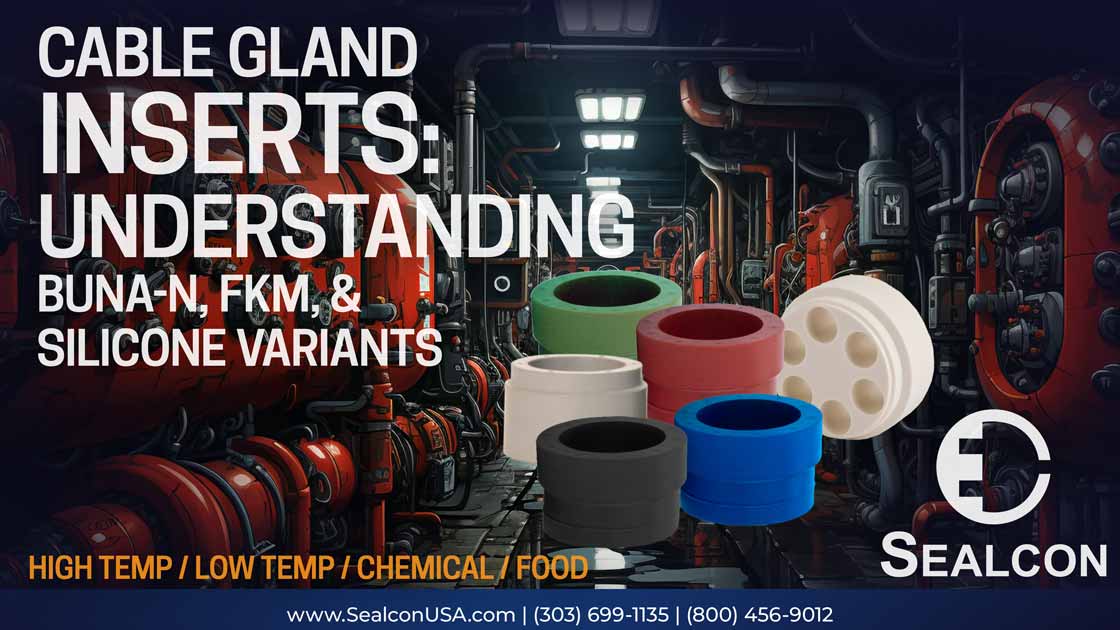Cable Gland Inserts: Understanding Buna-N, FKM, and Silicone Variants

Cable glands play a key role in providing seamless connections in a diverse range of industries, including automotive, aerospace, manufacturing, medical, and more. Cable glands Connectors must deliver dependable performance in the varying environments involved with these applications, so customization of construction and materials is often necessary. One way cable glands connectors are specialized for a specific job or process is in the type of inserts they use for providing sealing and protection against environmental factors.
Among the different types of inserts available, four important options stand out for high performance: Buna-N Standard, FKM, and Silicone variants, including those designed for high-temperature and food-related applications.
Buna-N Standard Inserts
Buna-N, also known as nitrile rubber, is a synthetic rubber copolymer that offers excellent resistance to oils, fuels, and other petroleum-based fluids. It is a popular choice for a wide range of industrial applications due to its ability to withstand these environments.
Buna-N standard inserts provide reliable sealing properties and are commonly used in connectors for machinery, automotive systems, and hydraulic applications where exposure to oil and fuel is prevalent. The material’s affordability and versatility make it a go-to option for many engineers and manufacturers.
FKM Inserts
FKM, or Fluoroelastomer, is a high-performance synthetic rubber with outstanding resistance to heat, chemicals, and fuels. FKM inserts are specifically engineered for demanding environments where extreme temperatures and aggressive chemicals are present.
These inserts maintain their integrity and sealing properties even in harsh conditions, making them suitable for aerospace, chemical processing, as well as oil and gas industries. While slightly more expensive than Buna-N, FKM offers superior performance in challenging applications, making it a worthwhile investment for critical systems.
Silicone Inserts
Silicone rubber is an excellent choice for flexibility, temperature resistance, and biocompatibility, making it well suited for a variety of specialized applications. Silicone inserts come in different formulations, which can be customized to meet specific requirements.
Silicone Red for High Temperature – Silicone inserts in red color are formulated to withstand high temperatures, typically ranging from -50°C to 230°C (-58°F to 446°F). These inserts find applications in automotive engines, industrial ovens, and heating systems where exposure to extreme heat is a concern. Their resilience against thermal cycling and oxidation makes them a reliable choice for prolonged use in hot environments.
Silicone Blue for Food-Related Applications – Silicone inserts in blue color are designed for applications where food contact and hygiene are paramount. These inserts comply with food-grade standards and regulations, ensuring safety and suitability for use in food processing, pharmaceutical, and medical equipment where contamination must be avoided. Silicone blue inserts offer excellent resistance to temperature extremes, chemicals, and sterilization methods, making them indispensable in industries with stringent sanitation requirements.
Sealcon Cable Glands and Inserts Meet Your Application Needs
Choosing the right insert for cable glands connectors is crucial to ensuring optimal performance and reliability in your process or application. Whether it’s sealing against oils and fuels, withstanding extreme temperatures, or meeting strict hygiene standards, there’s a suitable insert available to meet specific needs.
Sealcon understands the properties and applications of Buna-N, FKM, and Silicone variants in the development of cable gland connector inserts. Our team can assist you in finding the right solutions and inserts for your applications.

 Pick & Place Robotics Need High Quality Cable Management Solutions from Sealcon
Pick & Place Robotics Need High Quality Cable Management Solutions from Sealcon  Smart Cities and the Future of Urban Infrastructure Needs Sealcon Connectivity
Smart Cities and the Future of Urban Infrastructure Needs Sealcon Connectivity  The Backbone of the Digital World: Reliable Solutions for Data Centers in Cyberspace
The Backbone of the Digital World: Reliable Solutions for Data Centers in Cyberspace